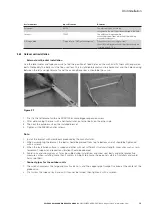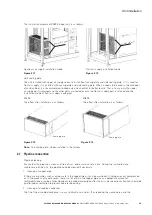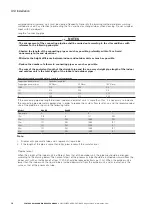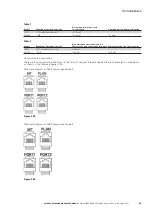
18
Unit installation
SPLIT RACK AIR CONDITIONER USER MANUAL
UM.ICUBE2.0-SRAC.SG.0822 August 2022 www.eaton.com
NOTES
If the outdoor unit is installed 6m higher than the indoor unit, the oil bend (storage bend) should be
installed on the gas tube every 6 m to 7.5 m to ensure that the compressor oil flowing back into the oil
bend in the pneumatic tube at the vertical height can be quickly taken away when the compressor is
stopped and restarted.
Connection step
WARNING
- Nitrogen-filled welding to prevent the formation of oxide scale.
- Please release nitrogen from the indoor unit before connecting. If there is no nitrogen discharged, please
contact Eaton Corporation.
- Prepare the copper tubes used to copper tubes indoor and outdoor units. The copper tubes must be
clean, free of impurities and moisture.
- If you need to connect the copper pipe through the wall, please pay attention to sealing the two ends of
the copper pipe when passing through the wall.
- After finishing, it is necessary to charge dry nitrogen, test leakage and vacuum.
- Eaton Corporation is not responsible for the damage to the unit caused by incorrect operation procedures
outlined in this manual.
1. Tool preparation
All tools, spare parts and materials must be ready, such as inner hexagon spanner, impact drill, vacuum pump,
nitrogen cylinder, piping tools, refrigerant pressure gauge, etc.
2. Punch a hole in the wall
Punch round or rectangular holes at the bottom of the wall to pass through connecting pipes, drains, wires, etc.
When the system pipe passes through the wall, the end must be effectively sealed to prevent residue from
entering the copper pipe.
3. Pipeline connection
•
Select the connecting copper pipe according to the unit specification
•
Install the refrigerant pipeline and check whether the pipe thread has a protective seal.
The appearance of the fixed (bracket) support of the refrigerant pipeline and water pipe is shown in the following
figure: 11.17, and the specific support parameters can be determined according to the on-site conditions.
Figure 2.17






























